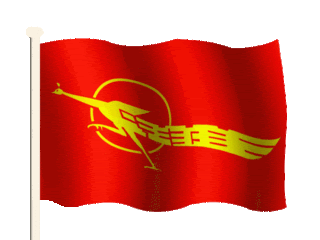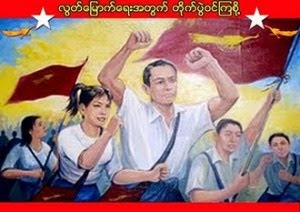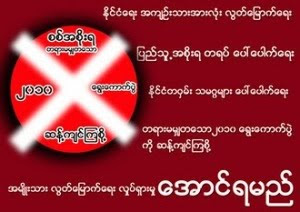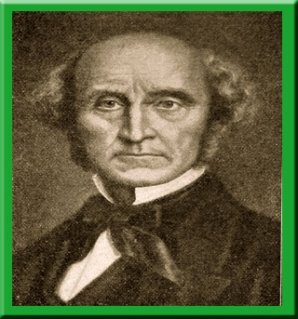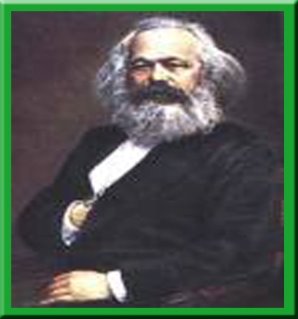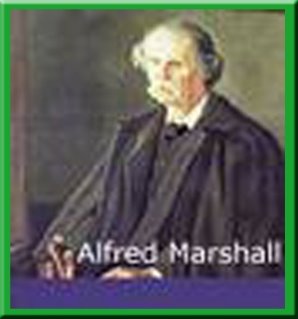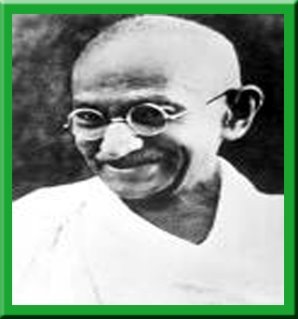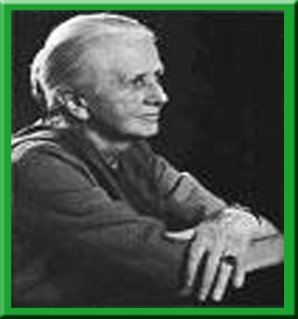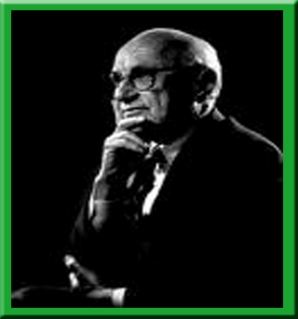Since 1990s, the Burmese democratic groups have been trying to use the mechanism employed by the UN Security Council for Burma Human Rights issues. Although the idea of ‘Human Rights’ has achieved a considerable prominence since the Universal Declaration of Human Rights was passed by the Resolution of the United Nations General Assembly in 1948, these rights were abused by some governments and organizations at the national level as like in Burma. This essay will analyze the mechanisms employed by the International organizations to prevent human rights abuses and the extent to which the effectiveness of these mechanisms.
The core of the Universal human rights system consists of the UN Charter and related instruments such as the Universal Declaration of Human Rights of 1948, the International Covenant on Civil and Political Rights (ICCPR) and the International Covenant on Economic, Social and Cultural Rights (ICESCR).
According to the Charter Article 68, the Economic and Social Council (ECOSOC) “shall set up commissions in economic and social fields and in the promotion of human rights. This was the birth of the Commission of Human Rights, an important organ established by ECOSOC in 1946. In 1947, the UN Commission first met and leaders from France, USA and Lebanon urged to prepare a draft declaration. It was adopted by the General Assembly in 1948 as Universal Declaration of Human Rights. The two principal treaties, ICCPR and ICESCA were approved in 1966.
In terms of the historical sequences, Steiner and Alston described the Human Rights movement as a four-tier normative edifice including the UN Charter, the Universal Declaration of Human Rights, the two principal covenants and a network of treaties (e.g. The Convention on the Prevention and Punishment of the Crime of Genocide, 1951 and the Convention on the Rights of the Child, 1990). (Steiner & Alston, 2000:140)
In terms of the idea of rights, Brown conceptualized into three generations such as First Generation Rights (Freedom of Speech and Assembly), second Generation Rights (Economic, social and cultural rights) and third Generation Rights (the rights of ‘peoples’). (Brown, 2005:690)
These rights were violated, especially when the potential victims do not live in a law-governed state or society. Chapman proposed a tripartite categorization of violations as
- Violations resulting from actions, policies, and legislation on the part of government
- Violations related to patterns of discrimination and
- Violations related to the state’s failure to fulfill minimum core obligations of enumerated rights.
These violations of Human Rights can be measured by ordinal measures such as scale/ranks and events based measures such as genocides. Pritchard further developed the initial path analysis for the overall measure of human rights conditions by using four different variables, i.e. constitutional acknowledgement, economic resources, enjoyment of rights and judicial independence. (Pritchard, 1988:145)
All these measures are important in determining the state responsibility for human rights abuses. As Pellet argued,
“[ ] Genocide threatens the international society as a whole, the very basis of the Still fragile international community” (Pellet, 1999:427)
As the human rights abuses not only threaten the potential victims but also the international community as a whole, the role of ‘the mechanisms employed by International Organizations to prevent human rights abuses’ have become prominent in international politics. As Keohane claimed, the problems faced by the governments in world politics give rise to demands for international regimes and these problems may be emerged from Asymmetric information, moral hazard and deception and irresponsibility. (Keohane, 1982:345)
This concept of ‘international regimes’ has become a common approach. A wide range of factors such as sets of principles, norms and rules and decision-making procedures characterized the regimes in world politics. The global human rights regime focused on the activities of the UN and its organs in terms of principles, norms, rules and decision-making procedures.
Overall, the UN’s human rights machinery consists of ‘two track’ organs such as charter-based organs and treaty-based organs. Charter-based organs created with a direct mandate by the UN Charter, i.e. the General Assembly, the Economic and Social Council and the Commission on Human Rights or authorized by the bodies of the Sub-Commission on the promotion and protection of Human Rights, and the Commission on the Status of Women. Steiner and Alston argued that the Charter-based bodies are political organs which have a broader mandate to promote awareness, to foster respect and to respond to violations of human rights standards. (Steiner & Alston, 2000:601)
Although the International Court of Justice was not included in the prominent global regime, the number of cases with a major human rights component in relation to self-determination and genocide has increased over the past decades.
Similarly, under the UN Secretary-General, there is the UN official with key responsibility for human rights, namely the High Commissioner for Human Rights. It has developed by the establishment of field operations in some countries such as Cambodia, Bosnia, and Yugoslavia and so on.
The main UN’s commission is the commission on Human Rights, established in 1946. The member governments meet actually for six weeks in Geneva. However, there was a provision for emergency sessions in the case of Yugoslavia, Rwanda and East Timor. (www.un.org)
In this commission, three different procedures are used to address human rights abuses, such as
Confidential consideration of a situation under 1503 procedure
Public debate under the 1235 procedure that lead to appointment of a special Rapporteur of the Commission and
The designation of a ‘thematic’ Rapporteur or working group to consider specific abuses (torture, arbitrary detention or disappearances)
Under the first 1503procedure has touched a lot of countries and only between 1972 and 1999, 75 states have been subjected to scrutiny, including Equatorial Guinea, Uruguay, Argentina and Saudi Arabia, where massive human rights abuses occur.
Furthermore, the 1235 procedure was emerged due to the failure of the commission to act publicly concerning the human rights abuses in Cambodia, Uganda, Argentina and other states. Since 1970s, the commission has widened the publicly scrutinized records under the 1235 debate with regard to Afghanistan, Cuba, east Timor, Burma, Rwanda, Sudan, etc.
Other thematic mechanisms established by the commission include the working groups on Disappearances, arbitrary executions, torture, religious tolerance, Xenophobia, violence against women, internal displacement, and foreign debt and so on. These mechanisms have increased gradually since 1970s. Overall, the commission has more effective during 1970s than the previous decades.
The other chartered based organ is the Security Council. In the case of South Africa, the council imposed a mandatory arms embargo and other restrictions, including economic sanctions. For the use of military force, the Council authorized in Korea, the Congo and Southern Rhodesia prior to 1990, in contrast, it used in 5 situations between 1990 and 2000. For economic sanctions, it imposed only twice prior to 1990, in contrast, it imposed eleven situations during 1990 and 2000.
However, the UN as a whole was highly critical in the case of Rwanda. According to the Rwanda report, the Independent Inquiry posed as
“The failure by the United Nations to prevent, and subsequently, to stop the genocide in Rwanda was a failure by the United Nations system as a whole” (Report, 1999)
Furthermore, the role of the UN’s Security Council was undermined by its lack of political commitments to respond the human rights violations. Instead, the armed forces of the Western powers have to use the military intervention to create a safe heaven for the Kurds in northern Iraq, to end a famine and factional Somalia, to end civil wars in Angola and Mozambique, to reverse ethnic cleansing in Kosovo although the Security Council did not pass the resolution as ‘Humanitarian Intervention’.
Despite of these failures, the Security Council has an effective mandate in East Timor. As reflected in Resolution 1272, human rights have become an integral component of the UN’s overall approach.
The other machinery employed by UN was the treaty organs. These organs related to the universal human rights treaties on Civil and Political rights, economic and social rights, racial discrimination, gender discrimination, torture and children’s rights.
The International Covenant on Civil and Political Rights (ICCPR) created a treaty organ called the Human Rights Committee and the Committee performed the tasks and duties defined in the Covenant and its optional protocol in 1976. Furthermore, the Convention on the Elimination of All Forms of Discrimination against Women (CEDAW) has become prominent as a treaty organ to prevent the rape and sexual abuse, torture and ill treatment of women.
In contrast, the International Covenant on Economic, Social and Cultural Rights (ICESCR) focused on economic and social rights. The principal UN body under this Covenant is the Committee on Economic, Social and Cultural rights, established in 1987. The main responsibility is to monitor the compliance of states having the obligations under the Covenant. In fact, ICCPR and ICESR are interdependent in some areas, as Steiner and Alston claimed as
“The right to form trade union is contained in the ICESCR, while the right to freedom of association is recognized in the ICCPR” (Steiner & Alston, 2000:247)
Other Treaty Organs used by UN to prevent human rights violations include the Committee of Racial Discrimination (CERD), the Committee against Torture (CAT) and the Committee on the Rights of the Child (CRC). Although there have been different practices and procedures employed by these Treaty Organs, they have a limited range of procedural options for dealing with human rights abuses and the relationships with states were usually based on the concept of “ constructive engagement”.
Moreover, the regional mechanisms for prevention of human rights were also effective to some extent. In 1951, the European Convention for the protection of Human Rights and fundamental Freedoms was adopted and it has attempted to list human rights and to create a mechanism for their protection. The European Commission on Human Rights and the European Court on HR were established under this convention. In addition, the Organization for Security and Co-operation in Europe (OSCE) involved in the draft constitutions of new Eastern European that include provisions for HR.
Other prominent mechanisms include the Inter-American Commission on Human Rights under the American Convention of Human Rights (1969) and the African Commission on Human and People’s Rights under the African Charter of Human and People’s Rights (1981).
In conclusion, it is obvious that a lot of mechanisms were employed by various International Organizations to prevent human rights abuses in different situations. As the effectiveness of these mechanisms depend on the co-operation and emergency response procedures of enforcement and implementation, we should use all means of mechanisms available to prevent human rights abuses in Burma.
Khin Ma Ma Myo
(30/04/2006)
Bibliography
- Brown, C. (2005), ‘Human Rights’ in John Baylis and Steve Smith (eds), The Globalization of World Politics, Oxford University Press, Oxford
- Chapman, A. (1995), ‘A Violations Approach’, International Commission of Jurists, the Reviews, No.55, December 1995
- Keohane, R. (1982) ‘The Demand for International regimes, International Organization 36(2):325-355
- Pellet, ‘Can a State commit a Crime?’ European Journal of International Law, 10 (2), www.ejil.org/journal/vol10/No2/index.html
- Pritchard, K (1988) ‘Comparative Human Rights: Promise and Practice’ in David Cingranelli (ed.), Human Rights: Theory and Measurement, Macmillan Press, Hampshire
- Steiner, H. & Alston (2000) International Human Rights in Context: Law, Politics and Morals, Oxford University Press, Oxford
- Report of the Independent Inquiry into the Actions of the United Nations during the 1994 Genocide in Rwanda, 15th December 1999. (www.un.org)

